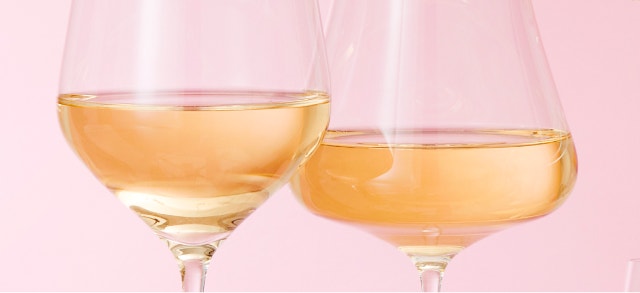How To Make Mead In A Mason Jar
One of the earth's oldest fermented alcoholic beverages, mead can be traced to China's Henan province a millennia ago. Historians speculate that rain vicious into a pot of honey, which diluted information technology enough to be fermentable past airborne yeasts.
Ken Schramm, cofounder and caput meadmaker at Schramm'southward Mead, says that mead has been nowadays in Africa, Europe, Asia and the Americas for thousands of years, although its popularity has ebbed and flowed.
In 2011, there were 30 meaderies in the U.S., co-ordinate to Upserve. But in 2020, the trade group American Mead Makers Association (AMMA) claims there were well-nigh 450 meaderies in the United States. The group as well says that 50 additional wineries and breweries make at least one mead in their production lineup.
"The craft beer revolution of the mid-2010's has given rising to consumers who are seeking out new and exciting beverages," says Bill Quirk, a New Bailiwick of jersey-based homebrewer who has a small mead label, Barrister Meadery. "Mead is gaining popularity as more than people take the opportunity to sample new producers. This is no longer but the stuff you would see at your local Renaissance Faire once a year." And, different another ferments, a simple mead is easy to make at home.
Styles of Mead
Mead, in its near basic form, is fabricated from honey, water and cultured yeast, and is fermented over fourth dimension. At that place are various styles and flavorings to consider based on personal preferences.
"Mead is an extremely varied beverage," says Quirk. "It tin exist dry, like a white wine; sweet, like a dessert wine, or anything in betwixt. Session meads (known every bit hydromels) tin take alcohol past volumes (abv) in the 3–5% range. Standard meads are in the 8–12% range, and strong or sack meads can run all the style up towards xx% abv."
"This is no longer only the stuff you would see at your local Renaissance Faire once a year." —Bill Quirk of Barrister Meadery
A mead's strength, sugariness or dryness is adamant typically past the ratio of raw honey to water, and the yeast strain at piece of work. Maturation methods can also exist a cistron.
An boilerplate mead requires one part honey to iv parts water. A lighter mead tin be made with i part dearest to 5 to half dozen parts water. Some, like the ancestral Lacandon balché-manner mead from Chiapas, Mexico, are diluted with every bit many every bit 17 parts h2o.
The best beloved to use is a separate topic, given the ingredient's terroir.
"I am addicted of orange blossom, alfalfa and many 'wildflower' blends," says Schramm. "Exist conscientious with those, though. Whatever floral source tin go into a wildflower dear."
Even though cultured yeasts are added typically to kickstart fermentation, it'south all-time to avoid pasteurized honey, every bit information technology doesn't have any native yeast content. Raw honey also brings a nuanced flavor to a mead.
Equally for flavorings, the possibilities are endless. Enhanced meads are most ordinarily infused with botanicals, fruits and/or flowers. These create complex meads. Merely some ingredients can contribute acids, tannins, their own native yeasts, nitrogen and other factors that should be considered to ensure your production is what you intended.
For those who champion sustainable beverages, using nutrient scraps is also something to consider.
"I love working with food waste matter and wild collected fruits," says Jori Jayne Emde, a fermentationist and alchemist with Lady Jayne's Alchemy. "So, I generally brand mead with a mellow beloved, like wildflower, then the fruits or food scraps are more pronounced in the end production."
Mead making often takes some trial and mistake, but in that location are some best practices to keep in mind.
The Essentials for Mead Making
To make mead can be every bit simple equally to add raw beloved and water to a mason jar, cover it with cheesecloth (or cap it if you want to depend solely on the dear's yeast for fermentation) for a few days and let nature do its affair.
Before you get started, Schramm and Quirk recommend having this equipment on hand.
- Sanitizer: Sanitize all tools and equipment to prevent malevolent bacteria and mold growth. Schramm says a bleach solution will piece of work, or Star San is an industry standard.
- Triple scale hydrometer: "This is the almost important tool for a new meadmaker," says Quirk. "A hydrometer takes all of the guesswork out of knowing when your mead is finished fermenting."
- Plastic fermentation bucket (preferably ii-gallon) or a mason jar with an airlock, if yous're going to beginning small
- Glass carboy (i gallon) with an airlock
- Yeast: Wine yeast works, as does ale yeast.
- Go-Ferm: Yeast food to rehydrate the fungus
- Fermaid O: A yeast nutrient
- Motorcar-siphon and racking cane setup: "Transferring your mead from the primary fermenter to the secondary vessel is done best with a racking arrangement," says Quirk. "The all-time role of a setup like this is that you can add a bottling wand to it when you lot want to canteen your mead."
- Mesh bag: For meads with fruits, flowers or botanicals.
Neb's Basic Traditional Mead
Courtesy of Bill Quirk, homebrewer, Barrister Meadery, Bergenfield, New Jersey
- 2½ pounds orange blossom or wildflower honey
- 1 gallon spring h2o (or nonchlorinated water)
- 5 grams Lalvin 71B or QA23 yeast
- 6 grams Get-Ferm Protect Yeast Starter
- four–6 grams Fermaid O
- ane gram Potassium Metabisulfite
- 2 grams Potassium Sorbate

In fermentation vessel, mix 12 cups water with all but one teaspoon of honey until dearest dissolves into "must." Use a hydrometer to determine the original gravity (OG).
Cascade ½ cup plus 1 tablespoon spring water into saucepan. Bring to 110°F (measure out with thermometer). Add together 6 grams Go-Ferm. Mix thoroughly. Add together remaining teaspoon of honey and mix again.
Remove saucepan from oestrus. When mixture'due south temperature drops to 104°F, sprinkle yeast packet over meridian and let rest 5 minutes for yeast to rehydrate. Bubbles should form on peak of water.

When bubbles form, use sanitized spoon or baster to add together some must from fermenter into yeast mixture to bring the temperature of both closer together. (Notation: because yeast mixture is warmer than must, the contrast could kill yeast. This slow process helps it acclimate.)
Add together ane tablespoon must to yeast mixture. Mix and let sit for five minutes. Echo twice, waiting 5 minutes between each addition. The temperature of yeast mixture and must should exist inside ten°F. In one case at that place, aerate must with whisk, or milk shake vessel for one infinitesimal.
Add together remaining yeast mixture into must and stir vigorously for 30–45 seconds. Identify in cool (60–70°F) area free from sunlight.
Fermentation should start within 8–24 hours. Stir later on 12 hours, and again at 24 hours. During 2nd stir, add 2 grams of Fermaid O dissolved in 50 grams spring h2o.

Repeat stirring schedule on the second solar day. Add 2 grams of Fermaid O dissolved in 50 grams spring water at the 48-60 minutes marker.
On third day, take gravity reading. Subtract electric current reading from original gravity of must. If the difference is at to the lowest degree ane-third of original gravity minus one.000, and so ⅓ sugar break has been reached and must doesn't demand to be fed anymore. (e.thousand. If the must started at 1.100, the ⅓ sugar break would be 1.100-1.000 and then divide that number past three.

Example:
- Step ane: 1.100-1.000=.1000
- Footstep two: .thousand/3=.0333
- Stride 3: 1.100-.0333= 1.0667, which would be the saccharide pause
If ⅓ sugar interruption hasn't been reached, add 1 gram Fermaid O dissolved in 25 grams spring water. Monitor fermenter. Take gravity readings every other day to ensure fermentation continues.
When hydrometer shows i.000 or less, information technology'due south set to transfer to ane-gallon carboy.

Rack mead to carboy using auto-siphon. Ensure that expressionless yeast and sludge on bottom of fermentation vessel doesn't enter carboy. Stabilize with potassium metabisulfite and potassium sorbate.
Add together honey to desired sweetness. Permit residue at least few weeks before bottling. Mead may take up to two months to be completely articulate. Makes 1 gallon.
Basic Vanilla Mead by Ken Schramm
Courtesy of Ken Schramm, cofounder/head meadmaker, Schramm's Mead, Ferndale, Michigan
- 22 pounds (ane.75 gallons) orangish bloom or alfalfa dearest
- 3½ gallons bound water, plus ½ cup
- iii divide vanilla beans
- 19 grams Go Ferm Protect Yeast Starter
- fifteen grams yeast Lalvin 71B-1122
- 2½ teaspoons Diammonium Phosphate
- 2 teaspoons Fermaid O
Set aside ½ cup h2o.
In a bucket, combine love with iii½ gallons of water. Stir to mix. Add together vanilla beans. A spoon will suffice just using an immersion blender or kitchen mixer to vigorously mix will add together oxygen, which is needed by the yeast.
Rehydrating the Yeast:
Heat ½ cup h2o until it reaches 104°F.
Pour heated water into sanitized basin. Add Go Ferm and stir until dissolved. Sprinkle yeast on surface without stirring. Expect 20 minutes, and then gently stir for five to 10 minutes until yeast moistens. Add moistened yeast to honey mixture.
Combine Diammonium Phosphate and Fermaid O and mix thoroughly. Separate into 5 equal portions.
On first mean solar day, add commencement two portions of Diammonium Phosphate and Fermaid O. Close bucket, add airlock and fill the airlock with cheap vodka.
On days 2–iv, stir must, at starting time gently to avoid foaming over, then vigorously to de-gas liquid. Add another portion of Lalvin 71B-1122 after foaming diminishes. Stir well.
This mead should ferment for 14–21 days. When bubbling of airlock has slowed, rack mead into sanitized carboy, and fit with a bung and airlock. Proceed airlock topped with cheap vodka at all times. Cheque every 2–3 days. Allow mead to clear to your liking, and bottle.
This mead should end with about 13% alcohol and a pleasant but non cloying amount of residual sweet. Makes 5 U.Southward. gallons.
Source: https://www.winemag.com/2021/06/11/how-to-make-mead/#:~:text=To%20make%20mead%20can%20be,let%20nature%20do%20its%20thing.



0 Response to "How To Make Mead In A Mason Jar"
Post a Comment